Application & Synthetic Testing
Benchmark Test Systems
The following system configurations were used for the Sandra memory benchmark graph, as well as all graphs listed under the Application and Gaming Benchmarks sections:
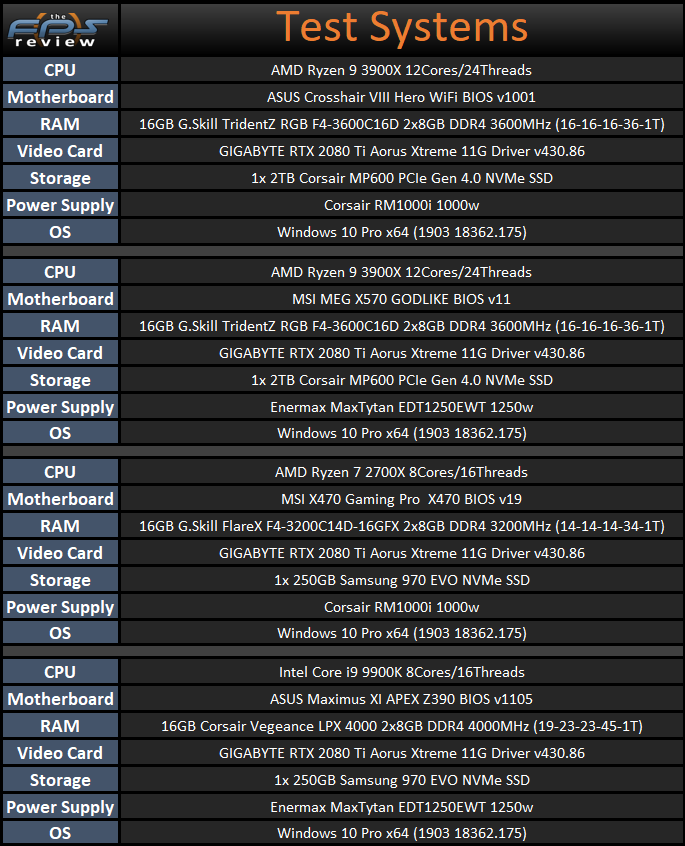
Sandra Memory Bandwidth
Note: All systems were run in dual channel mode using timings of 16,18,18,36@1T.

Given that all of these are dual-channel results, these numbers aren’t all that far apart, which isn’t surprising.
Sandra CPU Dhrystone
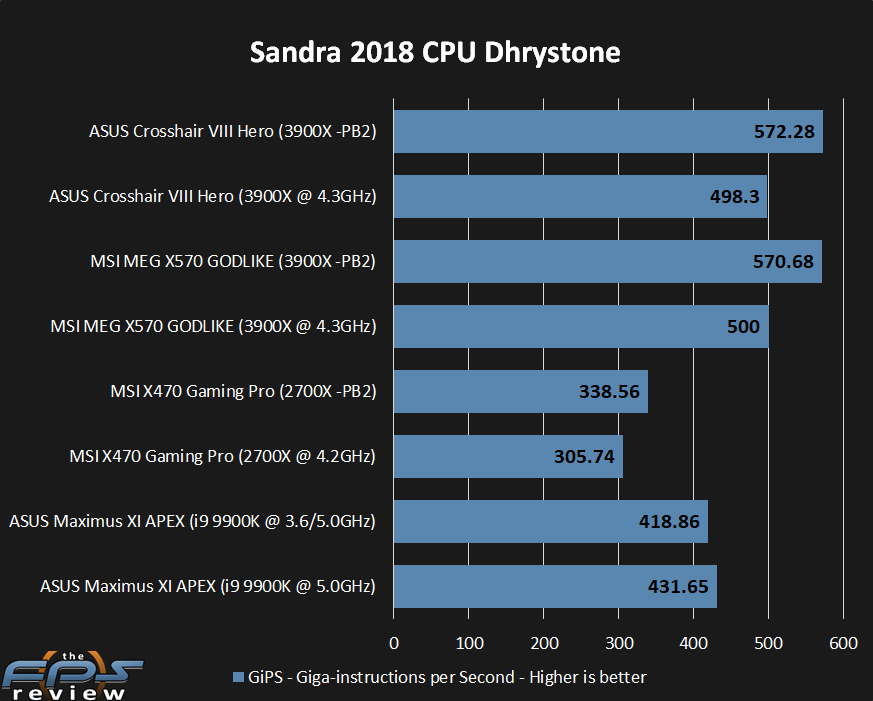
The 3900X proves time and time again what a monster CPU it is. Here we can see outstanding performance under PB2. Interestingly, after the 1.0.0.3ABBA AGESA code update, the Crosshair VIII Hero seemed to hold its boost clocks longer in many of the tests. It manages to edge out the GODLIKE board from MSI.
PCMark 10
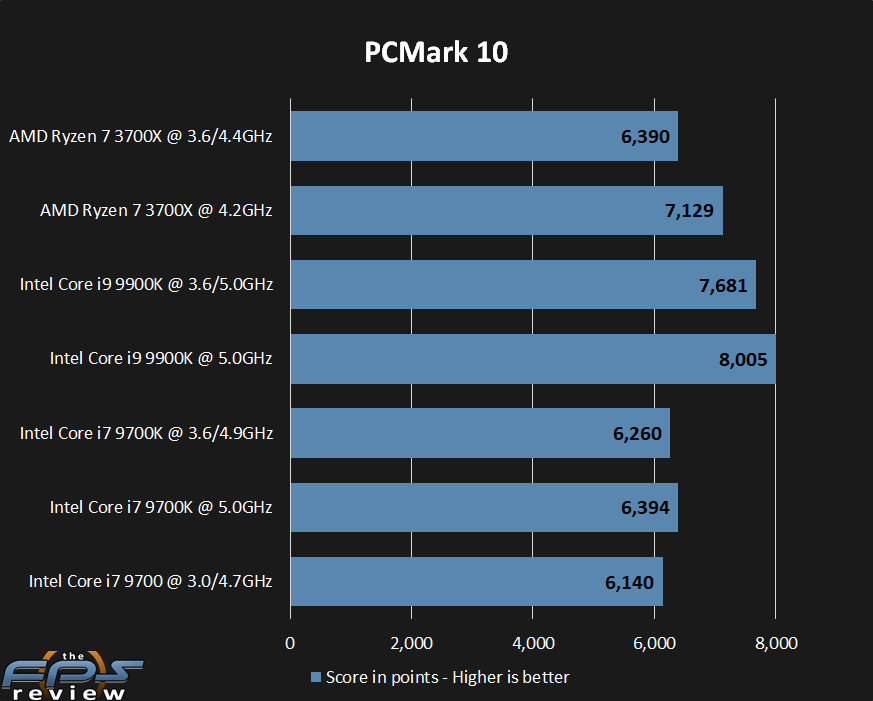
Unfortunately, while doing this review, I misplaced the data for the 3900X in this test, so the 3700X will have to stand in. The results are solid, but lags Intel in this particular case.
WinRAR – Multithread
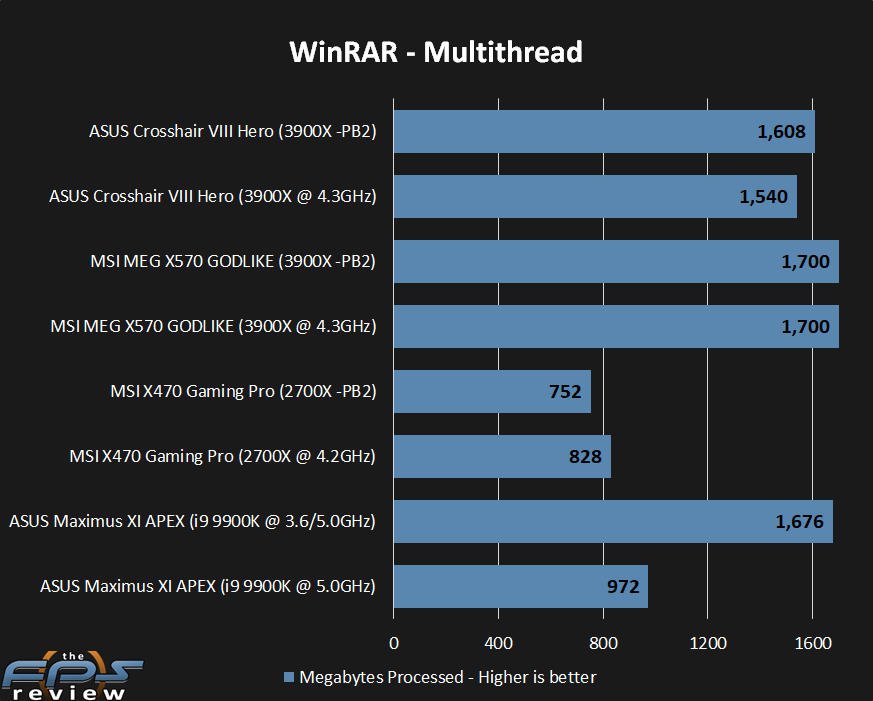
In this test, we see the ASUS Crosshair VIII Hero WiFi fall short of the MSI MEG X570 GODLIKE.
WinRAR – Single Thread
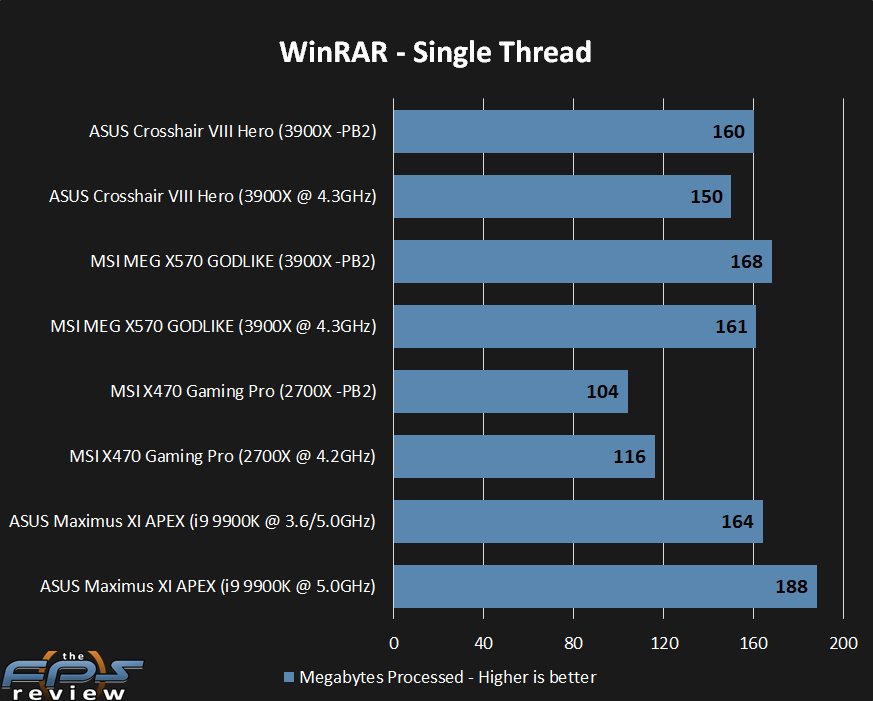
It is the same story here. The BIOS update improved performance quite a bit, but the results are consistently lower than what we saw with the MSI board as the 3900X does not boost correctly here.
wPrime v2.10

Oddly, there is a bit of a reversal between the two X570 motherboards with the ASUS now leading the MSI in this specific test.
POV-Ray

This test is the same as the last, with the ASUS board actually achieving slightly higher scores than the MSI.
V-Ray
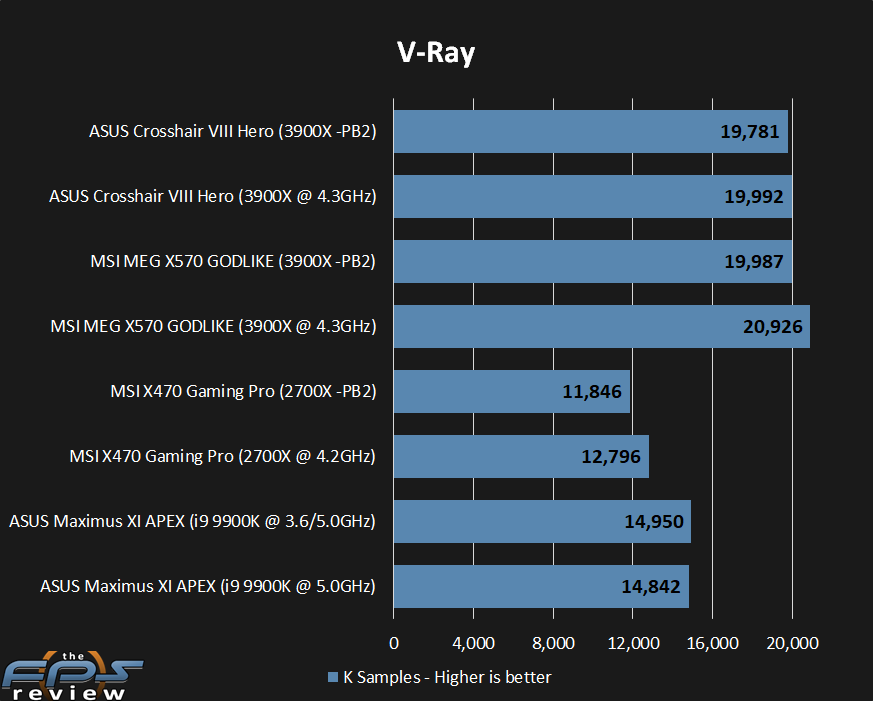
In this case the scores are very close between the two X570 systems. However, the MSI was clearly the faster if only by a tiny margin.
Cinebench R20 – Multithread

Here we see a slight improvement in manual overclocking, bringing the score up to 7135, however, the MSI scores considerably better here. I’m unsure why given the fact that the clock speeds are fixed in this test.
Cinebench R20 – Single Thread

Scores among the AMD systems are extremely close in this test. Again, the boost clocks never hit their advertised levels, but 4.5GHz was sustained longer in this instance than I had seen before.
Adobe After Effects CC – Puget Systems Benchmark
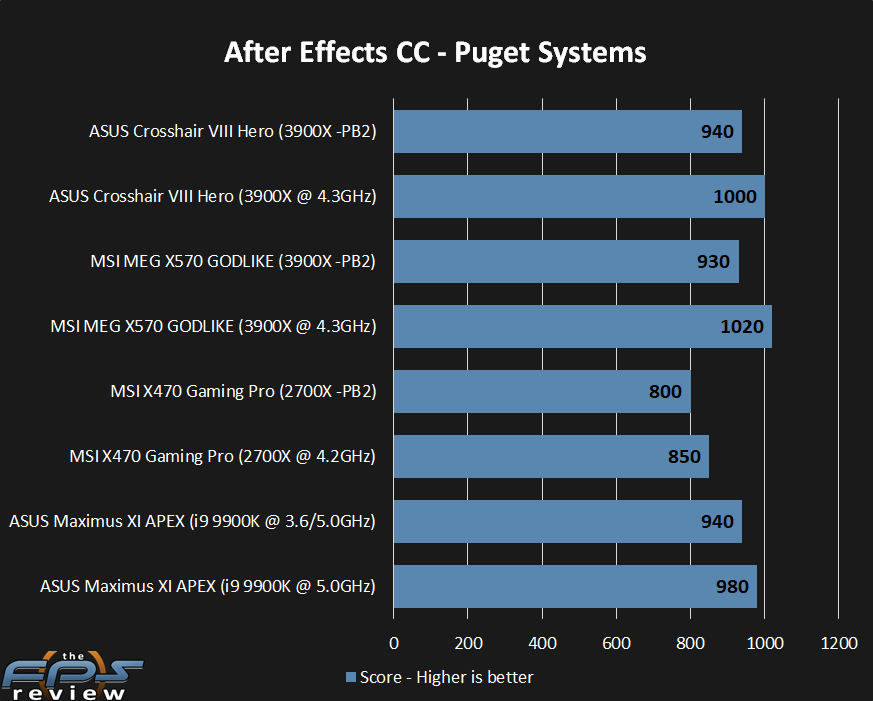
As with some of the other applications, the results are very close between our AMD test systems.
Blender
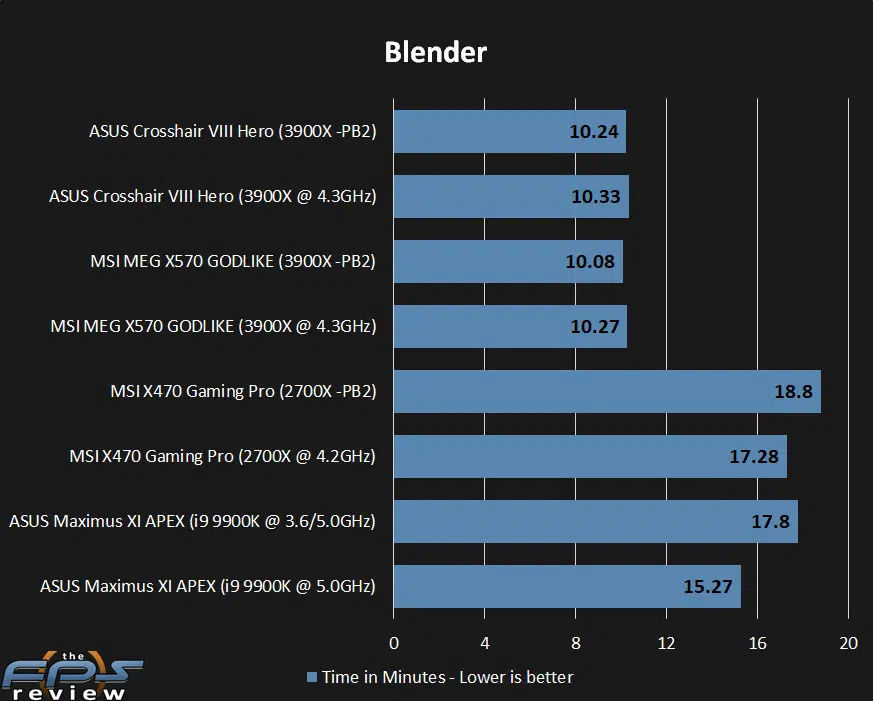
Our Blender results were encouraging as well. This indicates that although the boost clocks weren’t fixed in my case, the performance of the updated AGESA code is better than the earlier BIOS revisions we tested on this board.
Gooseberry
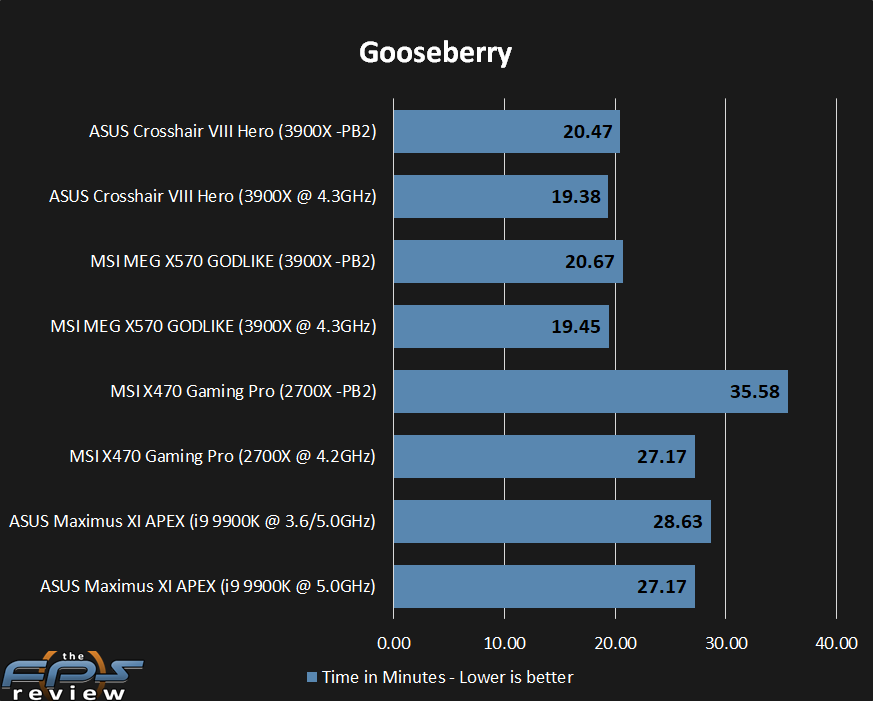
As expected, the 3900X test configurations smoke everything else in the lineup. The ASUS, once again scores a little better than the MSI here.
